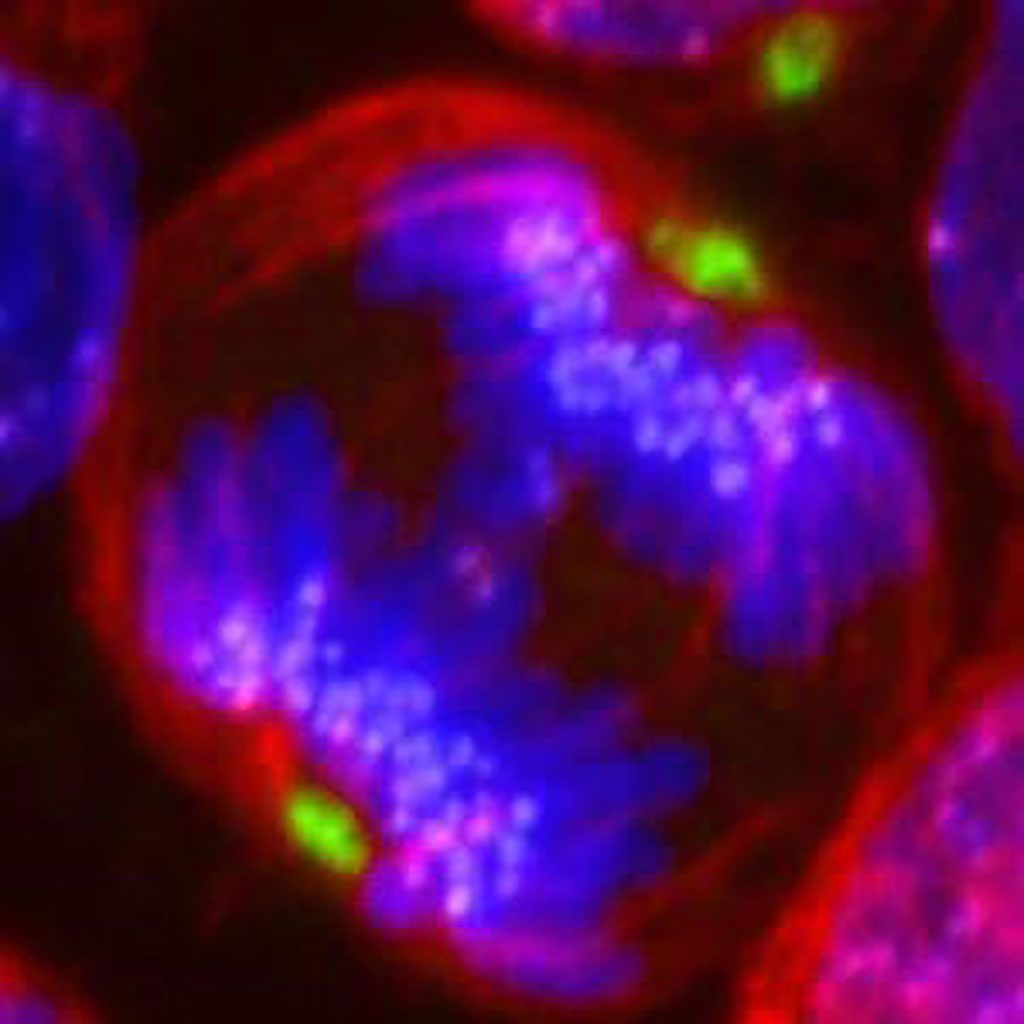Physiological Mechanisms Underlying Prevalent Pediatric Leukemia Discovered
By LabMedica International staff writers
Posted on 06 May 2020
B-cell acute lymphoblastic leukemia (B-ALL) is characterized by the accumulation of abnormal immature B-cell precursors (BCP) in the bone marrow (BM) and is the most common pediatric cancer. Posted on 06 May 2020
Among the different subtypes known in B-ALL, the most common one is characterized by the presence of a higher number of chromosomes than in healthy cells and is called High hyperdiploid B-ALL (HyperD-ALL). This genetic abnormality is an initiating oncogenic event affiliated to childhood B-ALL, and it remains poorly characterized.

Image: Confocal microscope image of a hyperdiploid B-cell acute lymphoblastic leukemia (B-ALL) sample stained with tubulin (red), pericentrin (green), centromeres (purple) and DNA (blue) (Photo courtesy of Óscar Molina).
A large team of hematologists at the Josep Carreras Leukaemia Research Institute (Barcelona, Spain) and their colleagues used 54 primary pediatric B-ALL samples to characterize the cellular-molecular mechanisms underlying the mitotic/chromosome defects predicated to be early pathogenic contributors in HyperD-ALL.
The team reported that HyperD-ALL blasts are low proliferative and show a delay in early mitosis at prometaphase, associated to chromosome alignment defects at the metaphase plate leading to robust chromosome segregation defects and non-modal karyotypes. The main proteins and processes leading to fatal error were a malfunctioning of the condensin complex, a multiprotein complex responsible for helping condense the genetic material correctly into chromosomes. The protein Aurora B kinase (AURKB), that is responsible for a correct chromosome attachment to the spindle poles, thus ensuring proper chromosome segregation; and the mitotic checkpoint, or Spindle Assembly Checkpoint (SAC), the cell machinery involved in controlling that chromosomes are correctly separated to each pole of the cell that is dividing.
Óscar Molina, PhD, the first author of the study, said, “We knew already that HyperD-ALL arises in a BCP in utero. However, the causal molecular mechanisms of hyperdiploidy in BCPs remained elusive. As faithful chromosome segregation is essential for maintaining the genomic integrity of cells, and deficient chromosome segregation leads to aneuploidy and cancer, we wanted to observe and deepen on what is happening in chromosomes' segregation in HyperD-ALL, because we suspected that by studying cell division in these cells we would find an explanation to this oncogenic process.”
The authors concluded that chromosome structure/condensation defects and hyperdiploidy were reproduced in healthy CD34+ stem/progenitor cells upon inhibition of AURKB and/or SAC. Collectively, hyperdiploid B-ALL is associated to defective condensin complex, AURKB and SAC. The study was published on April 22, 2020 in the journal Blood.
Related Links:
Josep Carreras Leukaemia Research Institute












